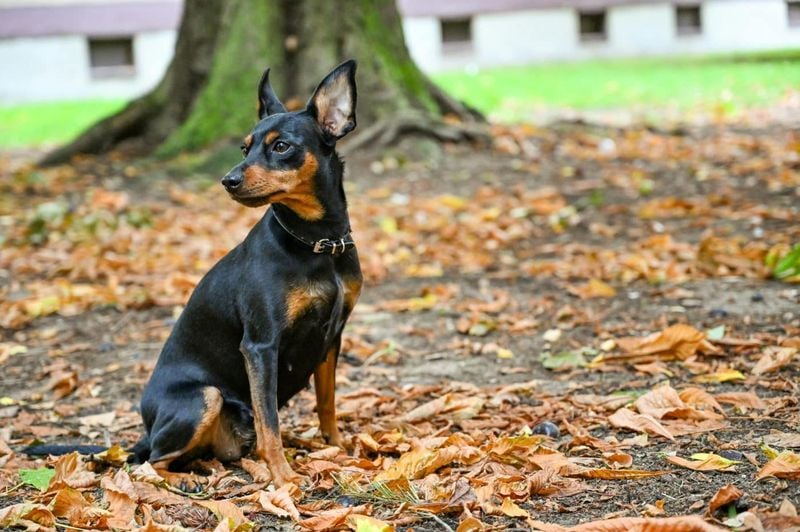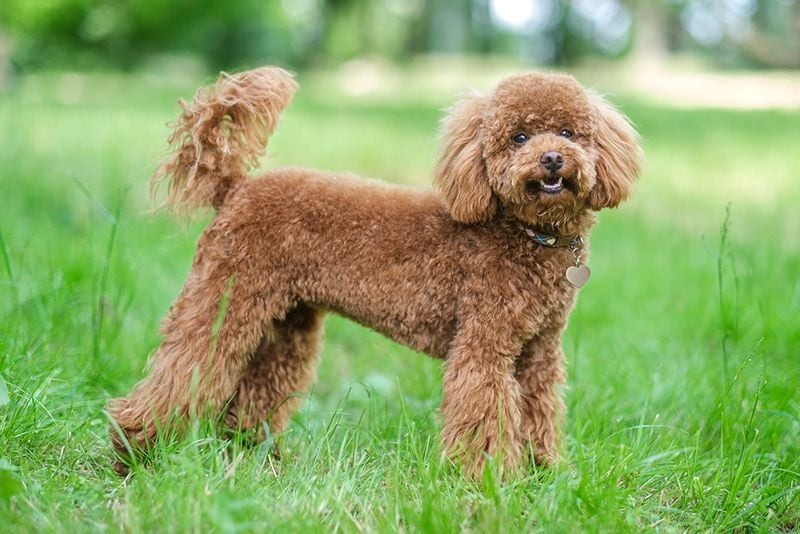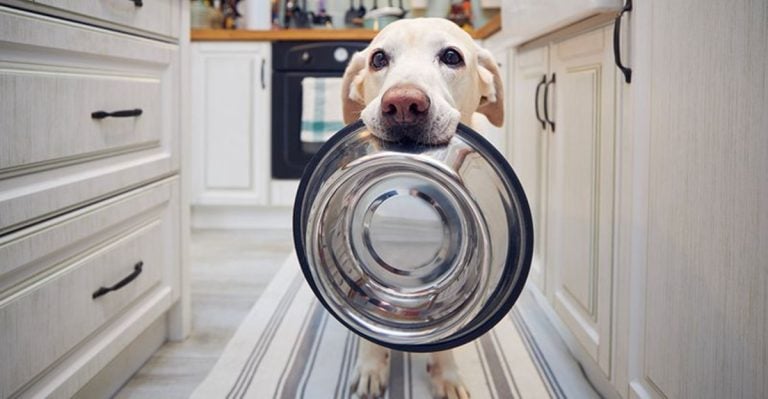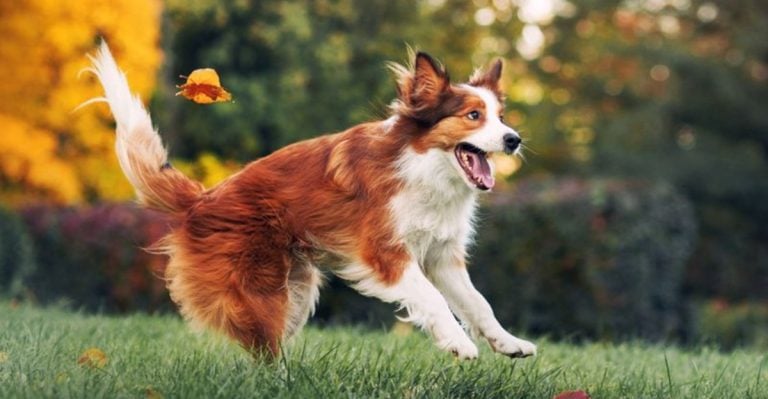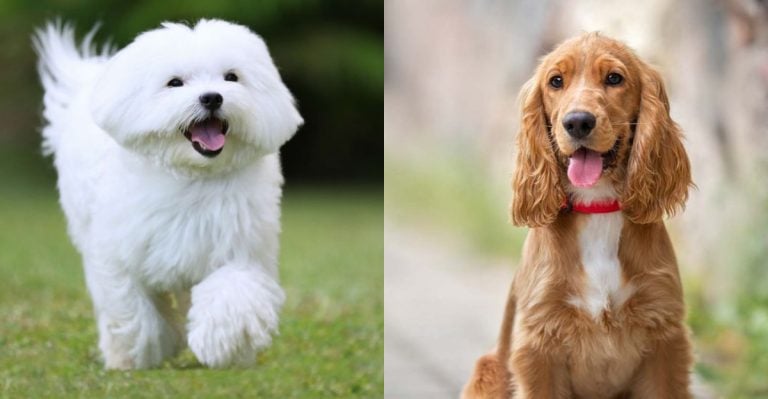12 Small Breeds Vets Say Are the Most Stubborn—And 7 That Are a Breeze
Don’t let their pint-sized paws and puppy-dog eyes fool you—some small dog breeds come with extra-large personalities and a seriously stubborn streak. While their cuteness is undeniable, these tiny canines often have their own agenda when it comes to training, behavior, and following commands. If you’ve ever tried to coax a Chihuahua into wearing a sweater or convince a Pekingese to go outside in the rain, you already know what we mean.
Veterinarians and dog behaviorists agree: certain small breeds were simply born to be bossy. These dogs may be fiercely loyal and affectionate, but they’re also independent thinkers who prefer to make their own rules. Their stubbornness can stem from deep-rooted instincts—some were bred to hunt or guard, while others were pampered as royal companions who never had to lift a paw. Either way, getting them to “sit” or “stay” might take a little extra patience (and a lot of treats).
But not all small breeds are so headstrong. In fact, several are known for their trainability, eager-to-please attitudes, and friendly disposition. These are the dogs that make life easier for first-time owners or anyone craving a low-drama pup that fits into the family routine with ease.
So, whether you’re debating between a cheeky terrier or a gentle lapdog, this list has you covered. We’re ranking 12 small breeds that vets say are notoriously stubborn—and 7 others that are surprisingly cooperative. If you’re looking for a companion who’s as obedient as they are adorable (or you’re ready to take on a little canine challenge), read on to meet the tiniest troublemakers and the easiest-going furry friends in the dog world.
1. Dachshund
Long-bodied and short-legged, Dachshunds were bred to hunt badgers underground—and that independent hunting spirit remains strong today. These sausage-shaped pups approach training sessions with a “what’s in it for me?” attitude.
Their stubborn streak appears most when they’re pursuing something interesting or avoiding something unpleasant. Commands like “come” often fall on selectively deaf ears, especially outdoors.
Despite their defiance, Dachshunds form deep bonds with their people. With consistent boundaries, food motivation, and plenty of patience, you can channel their determination into positive behavior—though they’ll always maintain that signature stubborn charm.
2. Scottish Terrier
Scotties carry themselves with such dignity you’d think they were royalty. These compact terriers approach life with unwavering confidence and a strong sense of self-importance that makes obedience training particularly challenging.
When a Scottie decides something isn’t worth doing, good luck changing their mind! Their independent nature dates back to their roots as solo hunters of vermin on Scottish farms, where thinking for themselves was essential.
Training requires respecting their intelligence while maintaining firm leadership. Quick, engaging sessions work best, as Scotties bore easily. Their loyal devotion to family makes the effort worthwhile, even if they’ll always maintain that air of making their own decisions.
3. Shih Tzu
Originally bred as companions for Chinese royalty, Shih Tzus haven’t forgotten their imperial heritage. These silky-coated charmers often approach training as if it’s beneath their station, preferring to be adored rather than instructed.
Their sweet faces hide a remarkably stubborn spirit. Ask a Shih Tzu to do something they don’t want to do, and you’ll often get a blank stare or a deliberate turn of the head.
Many owners give in to those big, expressive eyes, which only reinforces their stubborn tendencies. Consistent, positive reinforcement works best, though patience is essential. Despite their willfulness, their affectionate nature makes them wonderful companions—even if you sometimes feel more like their servant than their trainer.
4. Chihuahua
Don’t let their diminutive size fool you—Chihuahuas pack the confidence of a Great Dane into a five-pound frame. These pocket-sized pups often develop a “small dog syndrome” where they believe they’re in charge of everything and everyone.
Their legendary stubbornness stems from centuries of being treated like living accessories rather than dogs with training needs. Many Chihuahua owners inadvertently encourage bossy behavior by carrying them everywhere and excusing bad manners due to their cuteness.
Early socialization and consistent training can help manage their headstrong tendencies. A well-trained Chihuahua is a joy, but without boundaries, these tiny terrors can become household dictators who refuse commands and demand their way.
5. Miniature Schnauzer
With their distinctive beards and eyebrows, Mini Schnauzers look like wise old professors—and they’re just as clever. Their intelligence makes them quick learners but also skilled at finding loopholes in your training approach.
These terriers excel at testing boundaries, often with a mischievous twinkle in their eye. They’ll sit when asked, but might bark immediately after as if to say, “I did what you wanted, now I’ll do what I want.”
Boredom is their training nemesis. Without mental stimulation, they’ll create their own entertainment, usually in ways you won’t appreciate. Channel their smarts with puzzle toys and varied training exercises. Their stubborn streak is more about needing engagement than true defiance.
6. Pekingese
Once the sacred dogs of Chinese emperors, Pekingese carry themselves with an air of entitlement that would make any monarch proud. Their lion-like manes and flat faces give them a perpetually unimpressed expression that perfectly matches their attitude toward commands.
Training a Peke often feels like negotiating with a tiny sovereign who believes obedience is optional. Their independent nature isn’t malicious—they simply don’t see why they should follow orders when they’ve been treated as royalty for centuries.
Positive reinforcement works better than stern commands, though even treats sometimes fail to motivate these dignified little dogs. Their stubbornness is legendary among veterinarians, who often find them resistant during examinations despite their small size.
7. French Bulldog
Frenchies have skyrocketed in popularity thanks to their bat ears and squishy faces, but new owners are often surprised by their stubborn streak. These compact bulldogs combine clownish playfulness with a surprisingly determined will.
Their resistance to training often comes wrapped in adorable antics—flopping over dramatically when asked to sit, or tilting their heads quizzically at commands they’ve successfully followed dozens of times before. This charming defiance makes it hard to stay frustrated with them.
Short attention spans compound their stubborn nature. Training sessions must be brief and engaging to combat their tendency to get bored and wander off. Food motivation helps, though their tendency toward weight gain means treats must be limited.
8. Lhasa Apso
Developed as sentinel dogs in Tibetan monasteries, Lhasa Apsos approach strangers—and training—with deep suspicion. Their flowing coats hide a watchful, independent spirit that’s not easily swayed by human requests.
These ancient dogs have a dignified aloofness that can make training feel like you’re trying to convince a skeptical elder to try something new. They’re not aggressive in their stubbornness, just remarkably unimpressed by commands they deem unnecessary.
Consistency is crucial with Lhasas, as they quickly notice and exploit any inconsistency in rules. Their intelligence means they understand what you want—they just reserve the right to decide whether your request is reasonable. Early training helps, but many Lhasas maintain their independent streak throughout life.
9. Beagle
Beagles follow their noses first and their owners second. These merry little hounds were bred to track rabbits in packs, making independent decisions miles away from human handlers.
Their stubbornness manifests most dramatically during outdoor training. A Beagle who catches an interesting scent will seemingly develop instant hearing loss, ignoring even the most urgent recalls. Food can redirect their attention, but only momentarily if competing with an enticing smell.
Their perpetually wagging tails and sweet expressions make their defiance less frustrating, but don’t be fooled—behind those soulful eyes lies a determined mind. Beagles require secure fencing and leashed walks, as their stubborn pursuit of scents can lead them far from home with little regard for safety.
10. Boston Terrier
With their formal black-and-white markings, Boston Terriers may look like proper gentlemen, but they hide a mischievous streak beneath that tuxedo coat. Their expressive eyes and perky ears telegraph their moods, including their frequent decision to ignore commands.
Unlike some stubborn breeds that resist out of dignity or independence, Bostons often seem to turn training into a game. They understand perfectly well what you’re asking but might choose to spin in circles or bring you a toy instead.
Their intelligence makes them quick learners when motivated, but that same smarts lets them know exactly when you’re distracted or inconsistent. Bostons respond well to playful training methods that appeal to their natural enthusiasm and love of attention.
11. Jack Russell Terrier
Jack Russells approach life at full throttle with a “catch me if you can” attitude that challenges even experienced dog owners. These compact dynamos were bred to chase foxes into their dens, requiring both independence and tenacity—traits that translate directly to their training resistance.
Their stubbornness isn’t about defiance so much as selective prioritization. A Jack Russell will ignore commands when they conflict with more interesting pursuits like chasing squirrels or investigating holes.
Physical and mental exercise are essential for managing their headstrong nature. A tired Jack Russell is more likely to listen, though never guaranteed. Their intelligence makes them excellent candidates for agility, earth dog trials, and other dog sports that channel their energy and independence into productive outlets.
12. Miniature Pinscher
Min Pins strut through life with the confidence of a dog ten times their size. Often called “King of Toys,” these tiny dynamos truly believe they’re in charge of everything and everyone they encounter.
Their stubbornness stems from a combination of intelligence and natural assertiveness. Min Pins quickly figure out which behaviors get them what they want and can be remarkably persistent. A Min Pin who wants something will try every trick in their playbook to get it.
Without consistent leadership, these dogs easily become household tyrants. Early training is essential, though they’ll test boundaries throughout their lives. Their alert, watchful nature makes them excellent watchdogs, but this same trait can manifest as stubborn defiance when they decide something doesn’t meet their approval.
1. Cavalier King Charles Spaniel
Switching to the easier breeds, Cavaliers represent everything that makes dogs wonderful companions. Their silky ears and melting eyes aren’t just for show—they reflect a sweet temperament that genuinely wants to make their humans happy.
Training these regal spaniels feels less like work and more like a delightful collaboration. They respond eagerly to gentle guidance and positive reinforcement, rarely showing the stubborn resistance common in other small breeds.
Cavaliers were bred specifically for companionship, not independent work, which explains their cooperative nature. They thrive on praise and connection, making them perfect for first-time dog owners or families seeking a drama-free pet. Their eager-to-please attitude extends to veterinary visits, where they’re typically patient and accepting.
2. Papillon
Named for their butterfly-like ears, Papillons combine the best traits of toy breeds: they’re adorable, portable, and surprisingly trainable. These bright-eyed little dogs consistently rank among the most intelligent toy breeds, often mastering commands in just a few repetitions.
Unlike many small dogs, Papillons approach training with enthusiasm rather than resistance. Their eager-to-learn attitude makes them standouts in obedience and agility competitions, where they often outperform much larger breeds.
Their responsiveness stems from a combination of intelligence and a genuine desire to work with their people. Papillons remain alert and engaged during training sessions, rarely showing the boredom or defiance common in other small breeds. Veterinarians often comment on how cooperative they are during examinations compared to other toys.
3. Bichon Frise
These fluffy white dogs bring joy everywhere they go, including training sessions. Bichons approach learning with a cheerful willingness that makes them a delight for trainers of all experience levels.
Their people-pleasing nature stems from centuries as companion dogs rather than independent workers. Bichons genuinely want to understand what you’re asking and will try their hardest to comply, making them wonderfully responsive to positive reinforcement.
Unlike more stubborn breeds, Bichons rarely show willful disobedience. Their occasional training challenges usually stem from excitement rather than defiance. They excel in therapy work due to their combination of friendly temperament and trainability. For families wanting a small dog without the stereotypical small dog attitude, Bichons offer the perfect balance.
4. Maltese
Behind that flowing white coat and dainty appearance lies a surprisingly trainable temperament. Maltese dogs have been companion animals for thousands of years, resulting in a breed that naturally attunes to human cues and desires.
Their eagerness to follow their people extends to training, where they show remarkable focus for a toy breed. While they can be slightly more sensitive than some easy breeds, Maltese respond beautifully to gentle, positive methods.
These historic lapdogs form intense bonds with their owners, making them naturally inclined to please. Their responsive nature makes them excellent candidates for trick training and therapy work. For owners seeking a diminutive dog that won’t fight them on basic commands, the Maltese offers elegance without the attitude.
5. Havanese
Cuba’s only native breed brings Caribbean charm and surprising trainability to the small dog world. Havanese form such strong attachments to their people that following directions becomes a natural extension of their desire to be involved in everything you do.
Their adaptable nature makes them unusually flexible about new situations, commands, and environments. While some small breeds dig in their heels when faced with change, Havanese typically go with the flow, making training feel like a partnership rather than a battle of wills.
These social butterflies respond exceptionally well to positive reinforcement, especially when it involves praise and attention rather than just treats. Their natural playfulness makes training sessions fun for both dog and handler, creating a positive cycle that reinforces their cooperative spirit.
6. Toy Poodle
Toy Poodles pack all the brainpower of their larger cousins into a portable package. These curly-coated canines consistently rank among the most intelligent dog breeds, making them remarkably responsive to training efforts.
Unlike some smart breeds that use their intelligence to outsmart their owners, Poodles typically channel their mental prowess into learning and performing. They have an almost uncanny ability to connect actions with consequences, often picking up new commands in just a few repetitions.
Their people-oriented nature means they genuinely want to understand and fulfill requests. Toy Poodles thrive with varied, engaging training that challenges their minds. For owners willing to provide mental stimulation, these diminutive dogs offer the perfect combination of compact size and exceptional trainability.
7. Border Terrier
Don’t let their scruffy appearance fool you—Border Terriers are among the most level-headed and trainable of all terrier breeds. Unlike their more stubborn terrier cousins, Borders bring a uniquely cooperative spirit to the terrier temperament.
Originally bred to work alongside foxhounds and follow mounted hunters, Border Terriers developed a more team-oriented attitude than terriers bred to work independently. This history translates to a dog that’s remarkably willing to take direction while still maintaining that classic terrier spunk.
Their moderate energy and sensible nature make training feel like a reasonable conversation rather than a power struggle. Veterinarians often comment that Border Terriers combine the charming personality of terriers with an unexpected willingness to cooperate during examinations and procedures.












